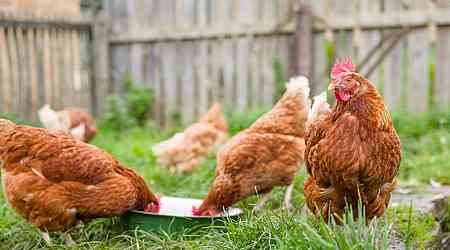
Any time a person catches H5N1, or bird flu, their infection is a chance for the virus to mutate in the wrong direction. When someone dies from the bird flu—as an elderly Louisiana man did on Jan. 6, becoming the first U.S. death from the disease—experts get especially concerned.
Could this person’s deadly infection signal that the H5N1 virus is becoming more adept at infecting people and causing severe disease in humans?
[time-brightcove not-tgx=”true”]Here’s what experts say.
A closer look at the recent death
So far, 66 people in the U.S.—most of them farmworkers who spent time around infected cattle and poultry—have been infected with H5N1, but all have recovered after mild illnesses.
Health officials get samples from these infected individuals in order to keep tabs on the virus, monitoring it for any signs that it might be mutating to become more adept at infecting people, spread more easily among people, or cause more serious disease. So far, there have been no indications that the virus is changing to allow it to jump from person to person.
The Louisiana man was swabbed for samples of the virus in his nose and throat before his death. So were the sick chickens in his backyard, with which he was in direct contact. After analyzing these genetic sequences, scientists at the U.S. Centers for Disease Control and Prevention (CDC) found a few mutations that weren’t detected in infected chickens on the man’s property, suggesting that the virus began changing after infecting him.
Read More: We Are Not Safe from Bird Flu Until We Protect Farmworkers
But the mutations weren’t sufficient to make the virus transmit more easily from one person to another, they concluded. The virus they identified was also detected in wild birds and chickens in the U.S. and in some human cases in the country and Canada, but it’s different from the strain responsible for the major outbreaks in dairy cows and chickens throughout country.
The good news, according to the CDC analysis, is that they found no changes in the part of the viral genome that mutates to resist antiviral drugs, so current drug treatments should still be effective against this strain of H5N1.
The reassuring—and less reassuring—news
Despite the fact that the virus mutated in the patient, the CDC scientists say that scenario is slightly more reassuring than if a version of the virus that is more adapted to human infection was found in wild birds or chickens. “Although concerning, and a reminder that A(H5N1) viruses can develop changes during the clinical course of a human infection, these changes would be more concerning if found in animal hosts or in early stages of infection (e.g., within a few days of symptom onset) when these changes might be more likely to facilitate spread to close contacts,” the CDC scientists write in the report. “Notably, in this case, no transmission from the patient in Louisiana to other persons has been identified.”
Read More: Can Bird Flu Survive in Milk?
The Louisiana man’s virus did not contain changes that allow H5N1 to more easily infect mammalian cells—as the H5N1 found in most of the infected dairy cows do. But experts say that viruses are notoriously indiscriminate mutators, and that it’s a matter of time before H5N1 hits on the right combination of mutations that enable it to spread more easily among people or cause more serious disease.
It’s also important to note the man’s specific risk factors. He was over age 65, which puts him at higher risk of developing severe disease with any viral infection, and also had underlying health conditions, according to state health officials. The fact that he died after his infections doesn’t necessarily mean he had a more virulent strain of H5N1.
The bottom line—for now
Based on the genetic study, CDC scientists say the risk to the public “has not changed and remains low.” Risk of infection is highest among people in the dairy and poultry industries who make direct contact with infected animals, or among people, such as the Louisiana man, who keep backyard flocks that could get sick from contact with infected animals in the wild.
So far, U.S. health officials have not decided to recommend vaccinating anyone in the country with doses of a previously developed vaccine in the U.S. national stockpile. Newer, updated versions of a vaccine based on the same mRNA technology behind the COVID-19 shots are currently being developed and tested in the event human outbreaks occur and wider vaccination is needed.





























